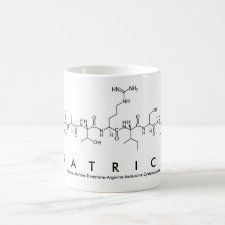
Authors: Horemans F, Alenus J, Bongaers E, Weustenraed A, Thoelen R, Duchateau J, Lutsen L, Vanderzande D, Wagner P, Cleij TJ
Article Title: MIP-based sensor platforms for the detection of histamine in the nano- and micromolar range in aqueous media.
Publication date: 2010
Journal: Sensors and Actuators B: Chemical
Volume: 148
Issue: (2)
Page numbers: 392-398.
DOI: 10.1016/j.snb.2010.05.003
Alternative URL: http://www.sciencedirect.com/science/article/B6THH-5057KRD-1/2/97ee524699a2fd1145074f57a9ed9150
Abstract: The need for more advanced, accurate and lower cost sensor platforms is constantly growing. However, for certain applications the already existing sensing systems based on biological recognition elements have sometimes restrictions, which limit their use. As a result, sensors with synthetic recognition elements, such as molecular imprinted polymers (MIPs), can be interesting alternatives. Molecular imprinting leads to the formation of inert polymer particles with nanocavities, which can exhibit similar selectivity and specificity to target molecules as antibodies or enzymes. It is demonstrated that MIPs can be readily incorporated into two different sensor platforms for the detection of histamine in aqueous media. The first platform is based on electrochemical impedance spectroscopy and allows for the accurate detection of histamine in the nanomolar range. The second sensing technique is based on microgravimetry and allows for the detection of histamine in the micromolar range. Using the analogous molecule histidine, it is demonstrated that both sensor platforms are specific for the detection of histamine
Template and target information: histamine
Author keywords: Biosensors, molecular imprinting, histamine, impedance spectroscopy, quartz crystal microbalance



Join the Society for Molecular Imprinting

New items RSS feed
Sign-up for e-mail updates:
Choose between receiving an occasional newsletter or more frequent e-mail alerts.
Click here to go to the sign-up page.
Is your name elemental or peptidic? Enter your name and find out by clicking either of the buttons below!
Other products you may like:
 MIPdatabase
MIPdatabase









